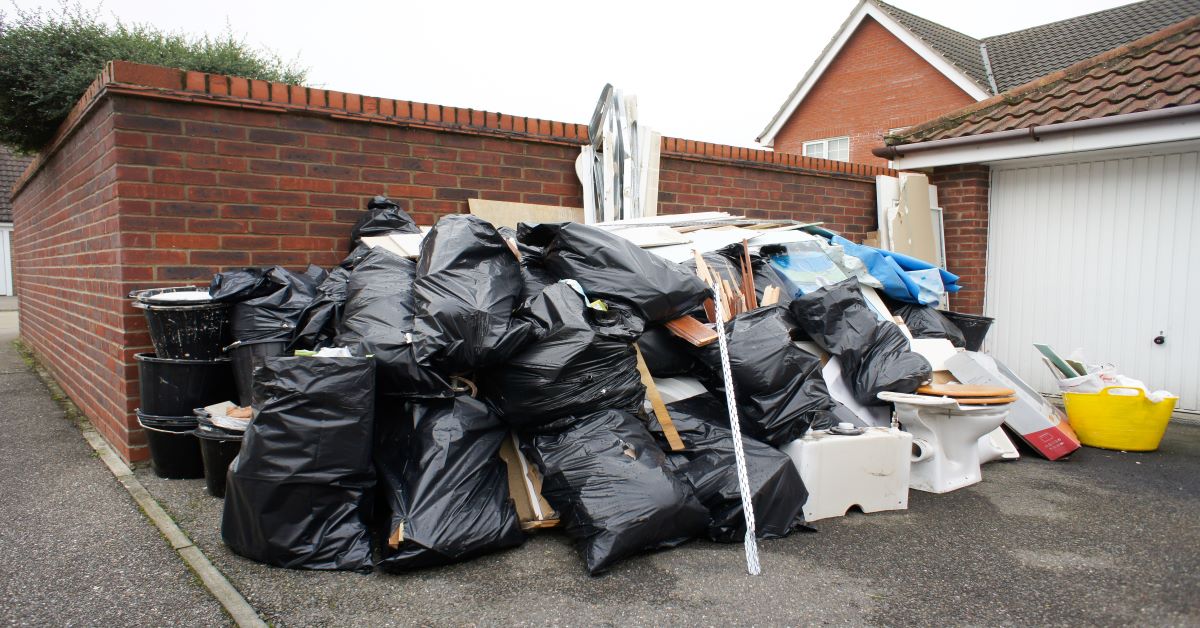Innovating Scrap Elimination Strategies for a Cleanser and Greener Future
In the quest of a more lasting and environmentally conscious future, the world of junk elimination has come to be a focal point for innovation. As we navigate the obstacles positioned by boosting waste generation and limited sources, the demand for novel strategies to managing and disposing of scrap has actually never ever been much more important.

Sustainable Waste Arranging Technologies
Utilizing sophisticated sorting innovations is essential in accomplishing lasting waste management methods for a cleaner and greener future. These modern technologies play a vital function in successfully separating different kinds of waste products, helping with recycling procedures, and reducing the amount of waste sent to landfills.
One secret technology in sustainable waste sorting is automated sorting systems. These systems utilize sensing units, magnets, and air classifiers to automatically arrange via mixed waste streams, separating recyclables like plastics, metals, and paper from non-recyclable materials. By automating this procedure, centers can raise sorting accuracy, enhance performance, and reduce contamination in recycling streams.
One more innovative innovation is optical sorting, which makes use of cameras and sophisticated software application to determine and arrange products based upon their one-of-a-kind buildings such as shade, form, and appearance. Optical sorting is specifically effective in separating different types of plastics, allowing for more efficient recycling and decreasing the environmental impact of plastic waste.
Efficient Junk Repurposing Methods
Effective methods for repurposing scrap materials are essential for reducing waste and advertising sustainability in different industries. This process not only draws away waste from land fills but additionally minimizes the need for brand-new raw materials.
In addition, reusing technologies have actually advanced, making it possible for the conversion of old products right into new products effectively. As an example, plastic waste can be thawed down and formed into brand-new things, such as furniture or building products. This circular economy design decreases the extraction of virgin sources and reduces power intake associated with manufacturing.
Additionally, repurposing natural waste into compost or biofuel provides one more sustainable option. Food scraps and backyard trimmings can be transformed right into nutrient-rich dirt modifications or renewable resource resources, adding to a closed-loop system that profits both the environment and society. Welcoming these efficient scrap repurposing approaches is important for producing a cleaner and greener future.
Eco-Friendly Transport Solutions

Moreover, the execution of alternate fuel sources such as biodiesel, hydrogen gas cells, and pressed gas (CNG) in transportation fleets adds to a substantial reduction in greenhouse gas discharges. Public transportation systems incorporating Check Out Your URL crossbreed or electrical buses, trains, and trams additionally play an essential role in advertising green commuting choices.
In addition, innovations in independent and shared transport services offer the possible to optimize car usage, reduction traffic blockage, and lower total carbon footprints - Construction debris removal atlanta. By welcoming these environmentally friendly transportation remedies, we can pave the means sonoma strong hauling for a more lasting and environmentally mindful future

Community Interaction Initiatives
Neighborhood involvement efforts play a vital function in cultivating partnership and driving favorable change within neighborhoods and societies. By including area members in junk elimination initiatives, a sense of possession and obligation in the direction of the environment is instilled. These campaigns can take various types, such as organizing neighborhood clean-up occasions, developing recycling programs, or supplying instructional workshops on waste management.
One efficient area engagement technique is the development of area clean-up groups. These groups bring citizens with each other to tackle junk removal tasks collectively, advertising a feeling of unity and shared purpose. By involving regional institutions, businesses, and companies in these efforts, a more comprehensive influence can be achieved, leading to a cleaner and greener community.
Additionally, academic campaigns concentrating on the relevance of correct garbage disposal and recycling can increase understanding and urge lasting practices among area participants. By equipping individuals with the knowledge and tools to make ecologically mindful decisions, area engagement efforts lead the way for a cleaner and much healthier future for all.
Future Patterns in Junk Elimination
With advancements in technology and shifting customer preferences, the landscape of junk elimination is poised to undergo substantial transformations in the coming years. One arising pattern in the junk elimination market is the enhanced emphasis on sustainability and eco friendly practices. Firms are significantly taking on environment-friendly disposal great site techniques, such as recycling, upcycling, and liable disposal, to reduce the ecological effect of junk elimination services.
One more future trend is the assimilation of innovation to streamline junk elimination processes. This consists of making use of advanced software application for scheduling pick-ups, optimizing paths for efficiency, and improving communication with clients. In addition, making use of drones for assessing and eliminating scrap from hard-to-reach locations is a trend that is anticipated to gain traction in the future.
In addition, as consumer understanding concerning the significance of correct waste management expands, there is a rising demand for openness and accountability in the junk removal sector. Customers are looking for providers who abide by ethical organization practices and prioritize sustainability. This fad is most likely to drive development and press firms to take on greener methods in scrap elimination procedures.
Conclusion
Finally, the developments in sustainable waste sorting innovations, effective junk repurposing methods, eco-friendly transportation remedies, and area engagement campaigns are leading the means for a cleaner and greener future in scrap removal. These ingenious techniques are not just lowering the ecological effect of waste disposal but also advertising a much more sustainable method to managing scrap. As these techniques remain to progress, we can expect to see further improvements in the sector and a shift towards even more ecologically conscious practices.